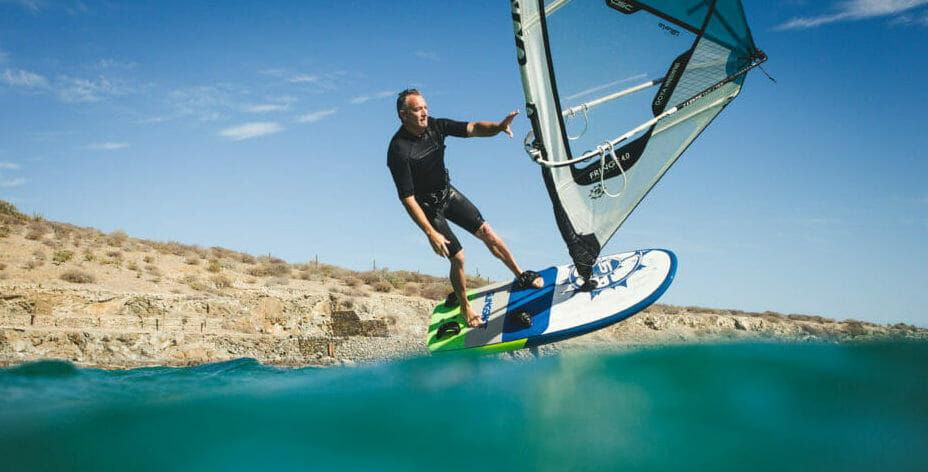
Smart people learn from their windfoil mistakes; even smarter people learn from the windfoil mistakes of others.
We’re strong believers of that concept when it comes to learning how to windfoil. Some things you just have to learn for yourself, like muscle memory, balance and weight distribution and how the foil feels and behaves as it flies through the water. Other lessons you’d be a lot better off learning from the mistakes of others; like the guy who spent a week failing because his stabilizer wing was upside down, or the many who tried to learn with a full-size mast instead of a short one. We’ve put together a list of five mistakes we see people make regularly when learning to windfoil.
With a little effort and a bit of luck, you’ll avoid these mistakes yourself on your way to becoming a proficient foiler.
1. Improper foil assembly and maintenance
It may seem obvious, but if you don’t put your foil together properly, it’s not going to perform properly. This means making sure all hardware is fully tightened, all components are oriented correctly and your board, sail and foot straps are all set up correctly. Maintenance of your foil, especially if you’re in salt water, can not be understated. Rinse it well after each use, and disassemble and lube the hardware and connection points regularly.
2. Not enough front foot pressure
This is probably the most common cause of crashing and frustration. You have to retrain your muscle memory when learning to foil. Too much back foot/heel edge pressure and you’ll rocket out of the water and crash. You want to pop up flat on the board, keep steady front foot pressure and slowly ease back when you’re ready to rise out of the water. Once you’re on-foil you’ll build speed and generate lift, which makes proper front foot pressure even more important.
3. Starting with a full-size mast
The short mast is one of the greatest learning tools in foiling. Slingshot’s Flight School mast package for the Hover Glide foil features 15”, 24” and 30” masts. This allows you to start small, get the hang of the foil with an easily manageable mast and progress in length as your skills evolve. The difference between starting with a 15” mast and a full size 35” mast is like night and day.
4. Not enough wind
Don’t get suckered into foiling in super light wind until you know you’re ready. You can always pump your way back to shore it’s too light to foil, but you’ll learn faster and save yourself a lot of frustration if your first few sessions are in wind strong enough to get on plane easily.
5. Kicking the foil under the water
One of the most common injuries we see with windsurf foiling is from kicking the foil under the water. Event with bright colors, it’s easy to forget the foil is down there, and some parts of it are super sharp. Booties are a big help if you can stand wearing them, as is a full-length wetsuit that will protect you from 16236122the foil and help cushion the impact when you crash. Take away on this one, uphaul. The boards are huge, the sails are small its, not that difficult!
Foil-Academy.com is your one-stop-shop for learning how to windfoil. Its rated as the numberone online course and it’s totally free.

